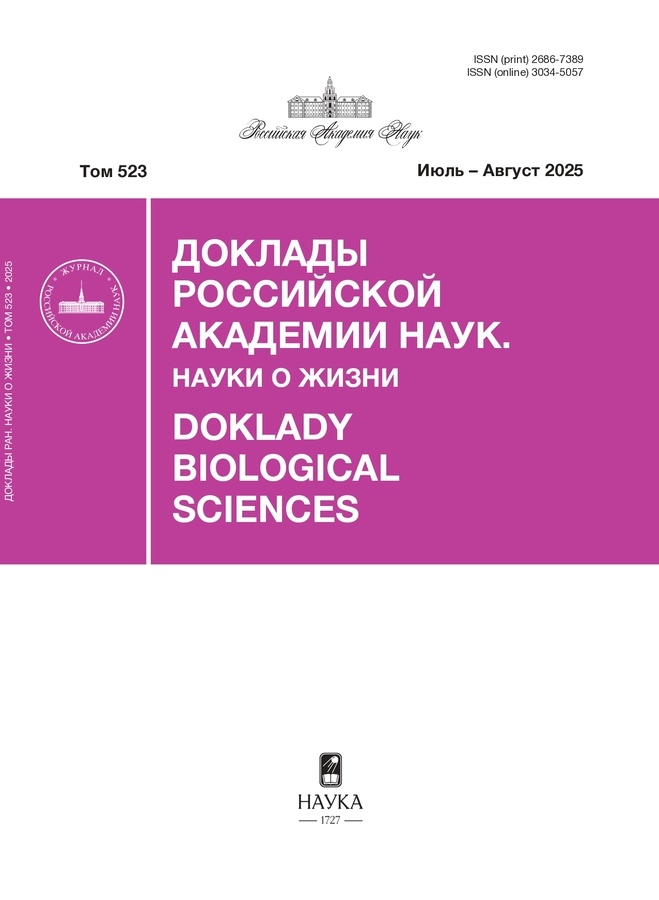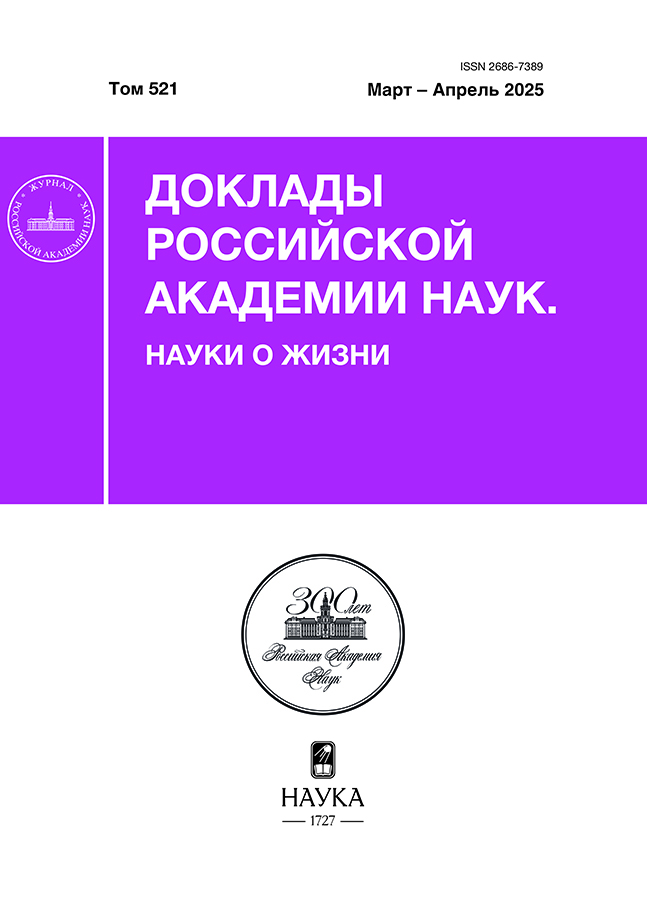Увеличение накопления модульных нанотранспортеров в опухолях мышей путем присоединения к этим нанотранспортерам полиэтиленгликоля с возможностью его отщепления в опухоли
- Авторы: Храмцов Ю.В.1, Уласов А.В.1, Сластникова Т.А.1, Георгиев Г.П.1, Соболев А.С.1,2
-
Учреждения:
- Институт биологии гена Российской академии наук
- Московский государственный университет им. М.В. Ломоносова
- Выпуск: Том 521, № 1 (2025)
- Страницы: 214-218
- Раздел: Статьи
- URL: https://cijournal.ru/2686-7389/article/view/684009
- DOI: https://doi.org/10.31857/S2686738925020089
- ID: 684009
Цитировать
Полный текст
Аннотация
Ранее для доставки биологически активных веществ в ядра клеток меланомы были созданы полипептидные конструкции – модульные нанотранспортеры (МНТ). В настоящей работе к МНТ по N-концевому цистеину были присоединены молекулы полиэтиленгликоля (ПЭГ) как с возможностью их последующего отщепления по сайту гидролиза опухолеспецифичными протеазами, так и без этого сайта (неотщепляемый ПЭГ). Все варианты МНТ, меченные радиоизотопом 111In, вводили мышам с привитой меланомой Клаудмана S91. Кинетику распределения радиоактивности в организме мыши изучали с помощью однофотонной эмиссионной компьютерной томографии. Анализ полученных данных с применением компартментной математической модели позволил установить, что присоединение ПЭГ к МНТ увеличивало его время жизни в крови и заметно повышало его накопление в опухоли. Добавление сайта отщепления ПЭГ опухолеспецифичной протеазой приводило к сильной задержке данного МНТ в опухоли. Полученные данные могут послужить основой для создания новых эффективных противоопухолевых препаратов.
Полный текст
Об авторах
Ю. В. Храмцов
Институт биологии гена Российской академии наук
Автор, ответственный за переписку.
Email: alsobolev@yandex.ru
Россия, Москва
А. В. Уласов
Институт биологии гена Российской академии наук
Email: alsobolev@yandex.ru
Россия, Москва
Т. А. Сластникова
Институт биологии гена Российской академии наук
Email: alsobolev@yandex.ru
Россия, Москва
Г. П. Георгиев
Институт биологии гена Российской академии наук
Email: alsobolev@yandex.ru
академик РАН
Россия, МоскваА. С. Соболев
Институт биологии гена Российской академии наук; Московский государственный университет им. М.В. Ломоносова
Email: alsobolev@yandex.ru
член-корреспондент РАН
Россия, Москва; МоскваСписок литературы
- Slastnikova T.A., Rosenkranz A.A., Gulak P.V., et al. // Int. J. Nanomed. 2012. V. 7. P. 467–482.
- Aloia T.A., Fahy B.N. // Expert Rev. Anticancer Ther. 2010. V. 10. P. 521–527.
- Nikitin N.P., Zelepukin I.V., Shipunova V.O., et al. // Nat. Biomed. Eng. 2020. V. 4(7). P. 717–731.
- An Q., Lei Y., Jia N., et al. // Biomol. Eng. 2007. V. 24. P. 643–649.
- Pfister D., Morbidelli M. // J. Contr. Release. 2014. V. 180. P. 134–149.
- Khramtsov Y.V., Ulasov A.V., Rosenkranz A.A., et al. // Dokl. Biochem. Biophys. 2018. V 478. P. 55–57.
- Desnoyers L.R., Vasiljeva O., Richardson J.H., et al. // Sci. Transl. Med. 2013. V. 5(207). 207ra144.
- Siegrist W., Solca F., Stutz S., et al. // Cancer Res. 1989. V. 49. P. 6352–6358.
- Thurber G.M., Dane W.K. // J. Theor. Biol. 2012. V. 314. P. 57–68.
- Al-Ejeh F., Croucher D., Ranson M. // Exp. Cell Res. 2004. V. 297. P. 259–271.
- Sinharay S., Howison C.M., Baker A.F., et al. // NMR Biomed. 2017. V. 30(7).
Дополнительные файлы













